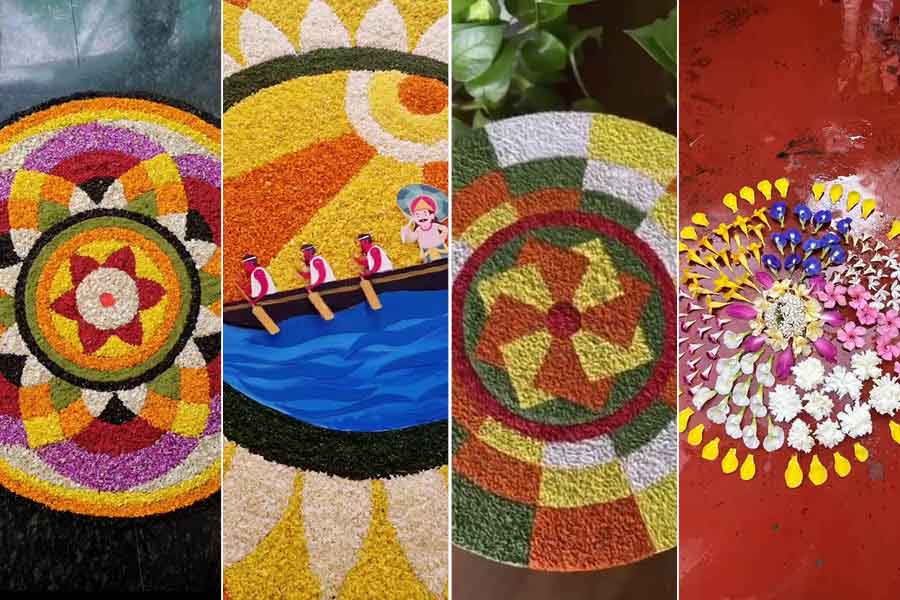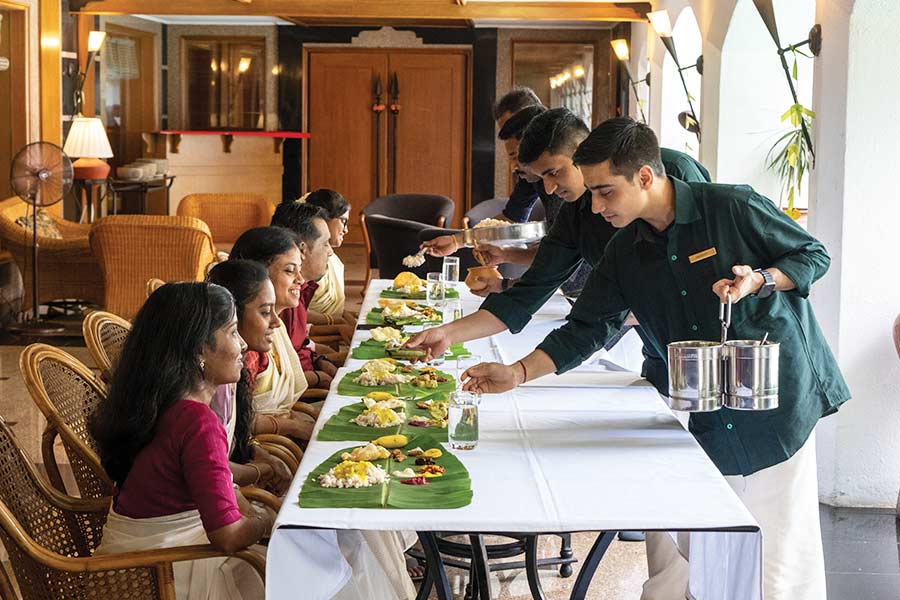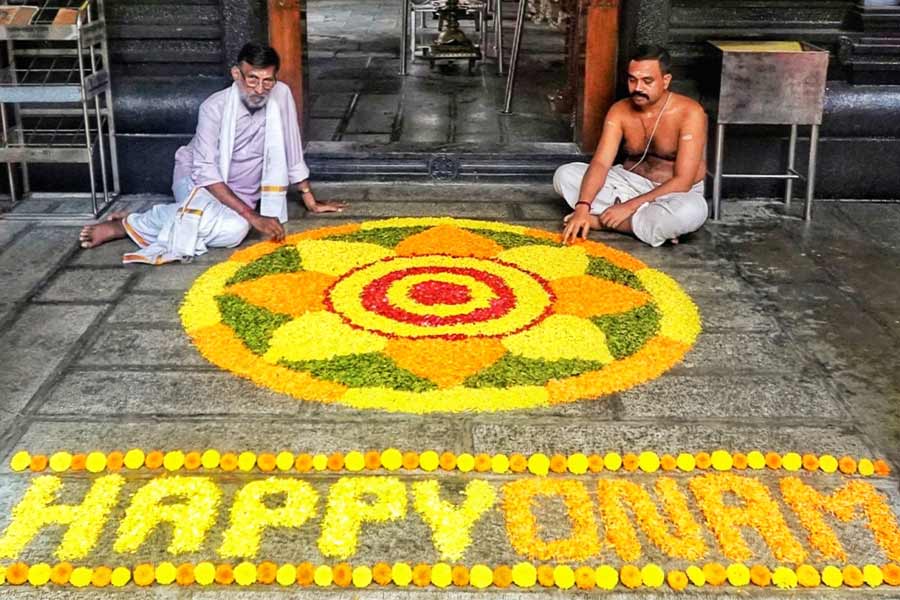Sadya means feast in Malayalam, and Onam celebrations in Kerala are incomplete without the Onam sadya. Family and friends come together to enjoy this grand vegetarian festive feast, which is served on a banan leaf and has about 26-28 dishes, including parippu (lentil soup), sambar (vegetable stew), avial (mixed vegetables), olan (ash gourd curry), and payasam (dessert), among others. Veteran chef Arun Kumar T.R.’s debut book Feast on a Leaf (Bloomsbury, 2024) delves into the traditions, cultural significance and science behind a traditional Onam sadya. He also shares family recipes and anecdotes in this book that, as the author says, will help anyone looking to make a traditional sadya at home.
A journalist-turned-filmmaker-turned-chef, Arun Kumar T.R. has been at the helm of a reputable brand and runs a catering company for the past 10 years. An English literature graduate from St Stephen’s College, Delhi University, he launched his first pop-up in Delhi and was the brand chef for the coastal restaurant Zambar. He belongs to a Nair family with roots in Thrissur, Kerala, and grew up watching his mother prepare Onam sadyas at home and later learnt to make the dishes when living by himself. Soon, he found himself making Onam sadya for others at restaurants and caterings. His memories and experiences of these traditionals meals have been an inspiration for his debut cookbook.
In this week of Onam, My Kolkata spoke to chef Arun Kumar T.R. about his book, his inspirations, Kerala cuisine and more.
Edited excerpts from the conversation follow.
My Kolkata: What inspired you to write a book about Onam sadya? Did your personal experiences and cultural background influence your approach to writing about Onam sadya?
Arun Kumar T.R.: Being a chef, I spend a lot of time interacting with clients. When there was a dish they were interested in, they would always ask for the recipe. So, as time passed, friends began telling me, ‘why don't you put all your recipes together into a book?’ But just collecting recipes and putting them into a book is not much of a help because today if you want recipes, it’s very easy, just go to Google, AI, or YouTube. The problem is you end up getting eight or 10 versions and you have to guess which one is right. So, I decided that just putting together recipes would not be the best thing and after talking to the publishers, we zoomed in on the idea of doing something on Onam, and the Onam sadya by itself is a very attractive meal. You have 20 - 26 items put on a banana leaf and there are a lot of traditions, science and Ayurveda behind the Onam sadya. There were scattered books with recipes of the sadya, but nothing substantial on the festival or the sadya. So, about a year and a half ago, I began the research into the festival, made a couple of trips to Kerala and spent all of Onam there last year.
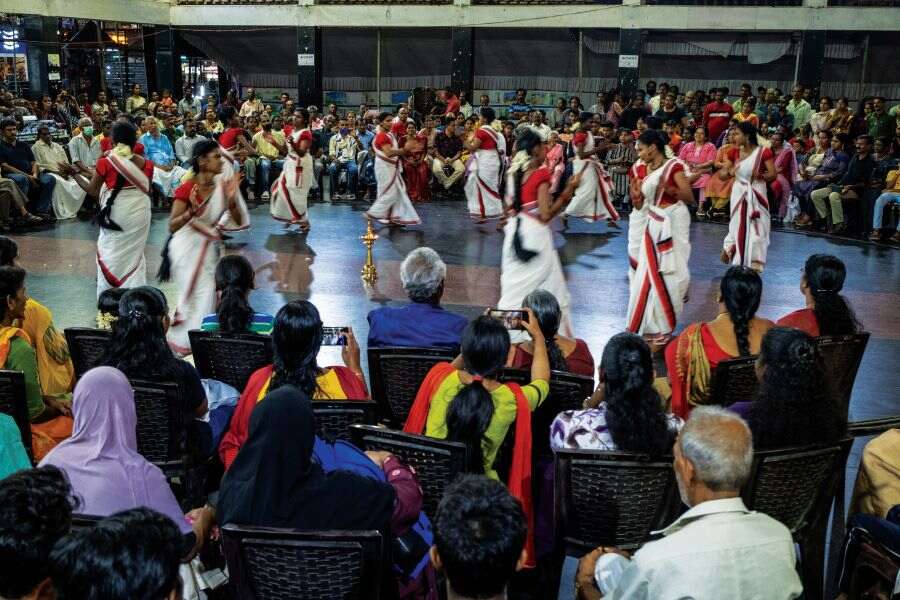
Chef Arun spent all of Onam in Kerala last year to research for his book Dinesh Khanna
Can you share a personal anecdote or memory associated with Onam sadya that motivated you to share its recipes with a wider audience?
A lot of the information in the book was collected orally and I relied a lot on my own family, my own memories — scattered in bits and pieces here and there. Speaking to people like my aunt and other elders in the family, I was able to bring these memories together and give a background to Onam and the sadya.
Every Onam was celebrated together at our home in Bengaluru, until later when we shifted to Delhi, and a lot of my family had kind of dispersed. I was with my parents in Delhi, but we still made it a point to at least make the Onam sadya and a pookalam on Onam, and maybe get some new clothes. The tradition continued and when other siblings of the family were in Delhi, whenever possible we got together and did a sadya. So, the sadya was like a constant.
When I went to Bombay, I came back to Delhi a couple of times just for Onam. With friends in Bombay, we would go eat somewhere that served sadya. But after that, whenever I got a chance, I would cook a sadya, which I started doing for friends and family. I would do quite a few of the dishes and the family would contribute a little bit and we would have a traditional sadya. So, Onam has always been quite linked to this journey all through.

Eating and cooking a traditonal Onam 'sadya' has been part of the chef-author's life since childhood Shutterstock
How did you curate the recipes for your cookbook? What criteria did you use to select the most authentic dishes?
The sadya has certain basic dishes. Accompaniments like chips, ginger curd relish, ginger tamarind relish, and the pickle, are essentials in a sadya, along with a couple of thorans, and curries. So, I started from there.
I’ve given options of mixing and matching to the readers so they can do a full sadya with around 20-plus dishes. You know, eventually a banana leaf has limited space. There’s no point in crowding it, with one dish touching the other and eventually getting everything mixed up. So, you can pick and choose. I would say a couple of the musts are thoran (mixed vegetables), aviyal (mixed vegetables with coconut and curry leaves), kalan (vegetables cooked in curd or buttermilk), olan (ash gourd curry) and erisheri (pumpkin sabzi), and palpayasam (a rice and milk dessert similar to kheer).
Would you like to share your favourite recipes from the book?
My favourites are palpayasam and paladapayasam, which is a payasam with jaggery with rice flakes.Then, in the chips, I guess, banana chips and jackfruit chips. Also, for me, injipuli (sweet-and-sour tamarind pickle) and inji (ginger relish) are again a must-try.
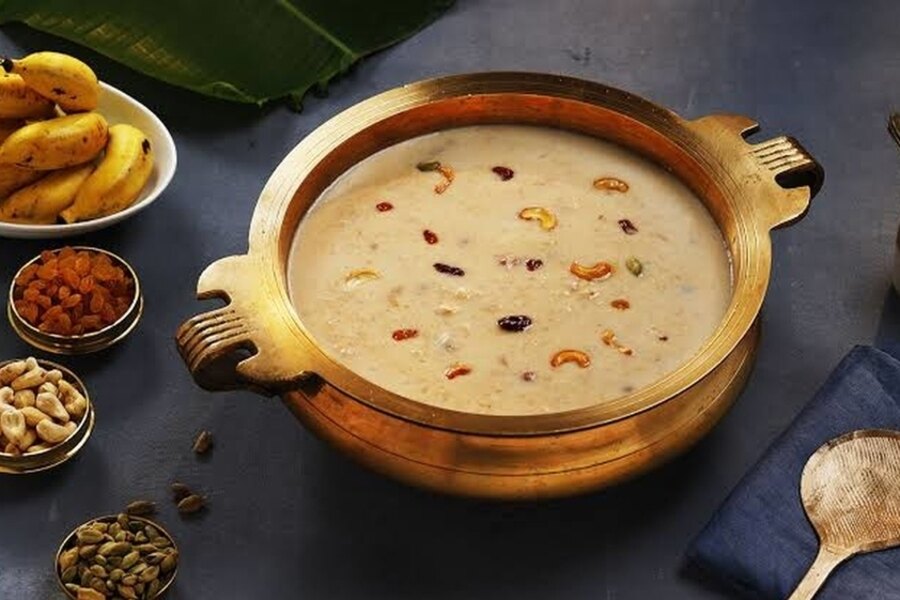
One of the chef's favourite 'sadya' dishes is 'paladapayasam' Shutterstock
What are some common misconceptions about Onam sadya or Kerala cuisine that you would like to dispel?
I think there are a couple of dishes which have ended up being not so traditional. This is especially true in the use of vegetables. The sadya is the best example of farm-to-leaf (or plate). It was traditionally made with vegetables that were available soon after the monsoon in Kerala like pumpkin, some root vegetables, and more. Fruits like banana and jackfruit are also available in abundance at this time. When people start using vegetables like carrots and peas, and start adding stew to sadya, then it becomes a little bit of a mishmash. It would be a sadya which means a feast, but it wouldn’t be a typical Nair Onam sadya. Someone told me that they had gobi manchurian served to them at a sadya in Trivandram (Thiruvananthapuram), which is going a little beyond.
What is the concept of sadya? People are introducing exotic vegetables like avocado and broccoli, but these are not associated with Onam sadya. Seasonal and hyper-local ingredients are catchphrases we use today, but it is something that we’ve been doing for a very long time. It is in our tradition, but we have lost it somewhere. We’re bringing it back to the centre table through this book.
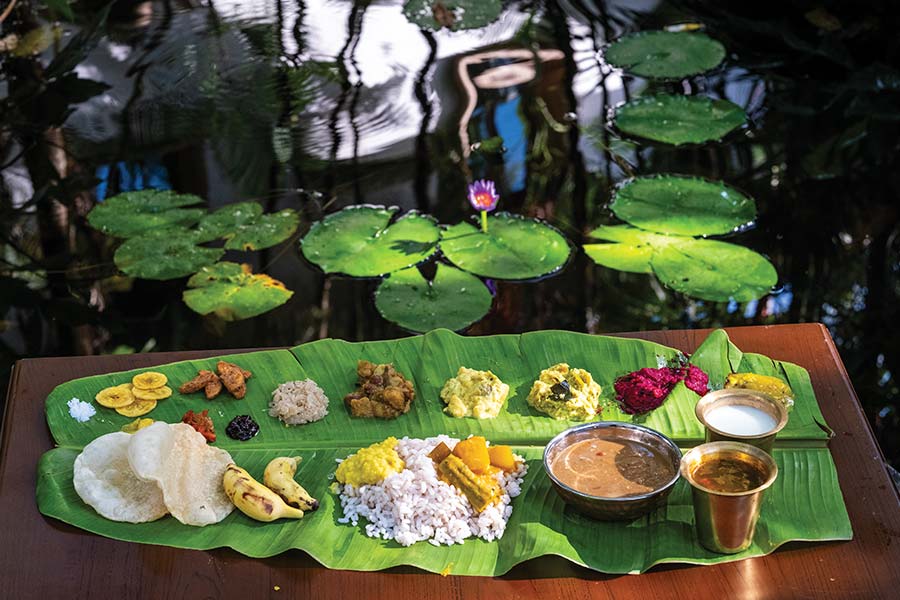
A traditional Nair Onam 'sadya' served on a banana leaf, featured in the book Dinesh Khanna
How do you think your cookbook can help readers outside of Kerala or India connect with the cultural significance of Onam sadya?
What the book does, apart from bringing Onam into focus, is give cultural and social backgrounds. The Onam sadya itself is not just a tradition, but a science — it lies in the way the leaf is placed and the process in which the food is served. When we start the sadya, we always insist that the tongue of the leaf has to be on the left of the person eating, and the sequence of the food served actually begins from this narrow side gradually expanding into the broader side. So, we start with the salt at one end, and a sweet at the other — just a teaspoon of each. Between this sweet and salty, we go through the five or six tastes that Ayurveda talks about. Each one of the dishes would give you an individual taste, and when you come to the middle of the leaf, you get a mix of flavours. So, there is a science to it.

